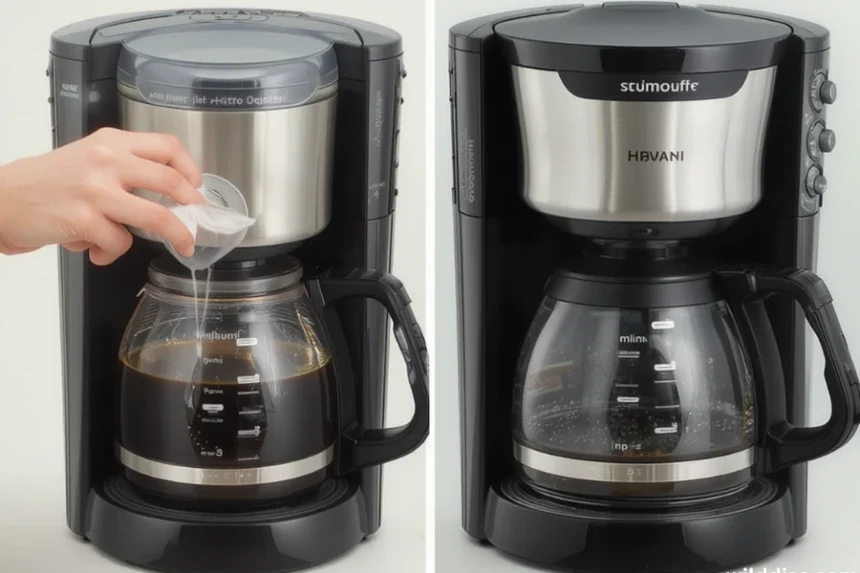Keeping your coffee maker clean is essential for maintaining the quality of your brew and prolonging the appliance’s lifespan. While many people rely on vinegar for descaling and cleaning, some prefer to avoid it due to its strong smell or potential taste transfer. Fortunately, there are several effective methods to clean a coffee maker without vinegar that can deliver excellent results. This article will guide you through various techniques and tips to keep your coffee maker spotless and functioning at its best.
Why Clean Your Coffee Maker Regularly?
Before diving into how to clean a coffee maker without vinegar, it’s important to understand why regular cleaning is crucial. Coffee oils, mineral deposits, and other residues build up inside machine over time, which could lead to:
Poor-tasting coffee: Residues can alter the flavor.
Reduced efficiency: Build-up can clog filters and water lines.
Shortened lifespan: Lack of maintenance can damage the machine’s components.
Bacterial growth: Moist, dirty components are breeding grounds for bacteria and mold.
A clean coffee maker not only produces better-tasting coffee but also operates more efficiently, saving you money and prolonging your appliance’s life.
Alternative Cleaning Agents for Your Coffee Maker
If you prefer not to use vinegar, several alternative agents can effectively descale and clean your coffee maker:
Lemon Juice: Natural, acidic, and deodorizing, lemon juice can break down mineral deposits and leave a fresh scent.
Citric Acid: A powerful, natural acid found in fruit, often sold in powdered form for descaling.
Baking Soda: Great for deodorizing and cleaning coffee oils.
Commercial Coffee Maker Cleaner: Specifically formulated cleaning solutions designed for coffee machines, safe and effective.
Now, let’s explore how to use these agents to clean your coffee maker without vinegar.
Step-by-Step Guide
1. Prepare Your Cleaning Solution
Depending on what you have available, prepare one of the following solutions:
Lemon Juice Solution: Mix one part bottled lemon juice with one part water.
Citric Acid Solution: Dissolve 1-2 tablespoons of citric acid powder in 4 cups of water.
Baking Soda Solution: Create a mixture with 2-3 tablespoons of baking soda dissolved in a quart of water.
Commercial Cleaner: Follow the manufacturer’s instructions for dilution.
2. Fill the Water Reservoir
Pour your chosen cleaning solution into the coffee maker’s water reservoir. Do not go above the maximum quantity, but fill it completely.
3. Run a Brew Cycle
Without adding coffee grinds, turn on your coffee machine and let it go through its whole brew cycle. This process allows the cleaning solution to pass through the entire system, breaking down deposits and oils.
4. Pause and Let Sit
Once the cycle completes, turn off the machine and let the solution sit inside for about 15-30 minutes. This soaking period helps loosen stubborn mineral buildup and residues.
5. Flush with Clean Water
After soaking, discard the cleaning solution and fill the reservoir with fresh, clean water. Run another brew cycle to flush out any remaining cleaning agents. Until the water flows clear, repeat these steps two or three times.
Additional Tips for Effective Cleaning
Clean the Filter Basket and Drip Tray: Remove and wash these components with warm, soapy water regularly to prevent mold and residue buildup.
Wipe Down Exterior Parts: Use a damp cloth to clean the machine’s exterior, including buttons and display panels.
Descale Frequently: Depending on water hardness, descale your coffee maker every 1-3 months to prevent mineral buildup.
Use Filtered Water: To reduce mineral deposits, consider using filtered or distilled water for brewing.
Pros and Cons of Cleaning Without Vinegar
Pros:
- No strong smell or taste transfer
- Safer for some sensitive machine parts
- Environmentally friendly options like lemon and citric acid
Cons:
- Some methods may require more effort or multiple rinse cycles
- Not all commercial cleaners are natural
When to Seek Professional Cleaning or Replacement
Even with regular cleaning, some issues may require professional servicing or a replacement of parts. If your machine shows persistent performance problems, leaks, or stubborn buildup, consult the manufacturer or a certified technician.
Conclusion: A Fresh Brew Without Vinegar
Learning how to clean a coffee maker without vinegar empowers you to maintain your appliance in a natural, safe, and eco-friendly way. Using alternatives like lemon juice, citric acid, baking soda, or commercial cleaners can effectively descale and clean your coffee machine, ensuring that every cup tastes fresh and delicious. With proper maintenance and regular cleaning, your coffee maker will serve you well for years to come, delivering the perfect brew every morning.



